1. Choi SH. Current management of peripheral arterial disease. J Korean Med Assoc. 2010; 53:228–235.
2. Verma A, Prasad A, Elkadi GH, Chi YW. Peripheral arterial disease: evaluation, risk factor modification, and medical management. J Clin Outcomes Manag. 2011; 18:74–84.
3. Selvin E, Erlinger TP. Prevalence of and risk factors for peripheral arterial disease in the United States: results from the National Health and Nutrition Examination Survey, 1999–2000. Circulation. 2004; 110:738–743. PMID:
15262830.
4. Hankey GJ, Norman PE, Eikelboom JW. Medical treatment of peripheral arterial disease. JAMA. 2006; 295:547–553. PMID:
16449620.
5. Rhee SY, Kim YS. Peripheral arterial disease in patients with type 2 diabetes mellitus. Diabetes Metab J. 2015; 39:283–290. PMID:
26301189.
6. Ko YG, Ahn CM, Min PK, et al. Baseline characteristics of the retrospective patient cohort in the Korean Vascular Intervention Society Endovascular Therapy in Lower Limb Artery Diseases (K-VIS ELLA) Registry. Korean Circ J. 2017; 47:469–476. PMID:
28765738.
7. Creager MA. Results of the CAPRIE trial: efficacy and safety of clopidogrel. Vasc Med. 1998; 3:257–260. PMID:
9892520.
8. Becker GJ, McClenny TE, Kovacs ME, Raabe RD, Katzen BT. The importance of increasing public and physician awareness of peripheral arterial disease. J Vasc Interv Radiol. 2002; 13:7–11. PMID:
11788688.
9. Novo S. Classification, epidemiology, risk factors, and natural history of peripheral arterial disease. Diabetes Obes Metab. 2002; 4(Suppl 2):S1–S6.
10. Izquierdo-Porrera AM, Gardner AW, Bradham DD, et al. Relationship between objective measures of peripheral arterial disease severity to self-reported quality of life in older adults with intermittent claudication. J Vasc Surg. 2005; 41:625–630. PMID:
15874926.
11. Issa SM, Hoeks SE. Health-related quality of life predicts long-term survival in patients with peripheral artery disease. Vasc Med. 2010; 15:163–169. PMID:
20483986.
12. Hirsch AT, Hartman L, Town RJ, Virnig BA. National health care costs of peripheral arterial disease in the Medicare population. Vasc Med. 2008; 13:209–215. PMID:
18687757.
13. Fowkes FG, Aboyans V, Fowkes FJ, McDermott MM, Sampson UK, Criqui MH. Peripheral artery disease: epidemiology and global perspectives. Nat Rev Cardiol. 2017; 14:156–170. PMID:
27853158.
14. Kang EJ, Shin HS, Park HJ, Jo MW, Kim NY. A valuation of health status using EQ-5D. Korean J Health Econ Policy. 2006; 12:19–43.
15. Becker F, Robert-Ebadi H, Ricco JB, et al. Chapter I: definitions, epidemiology, clinical presentation and prognosis. Eur J Vasc Endovasc Surg. 2011; 42(Suppl 2):S4–S12.
16. Liles DR, Kallen MA, Petersen LA, Bush RL. Quality of life and peripheral arterial disease. J Surg Res. 2006; 136:294–301. PMID:
17046794.
17. Wieland LS, Manheimer E, Berman BM. Development and classification of an operational definition of complementary and alternative medicine for the Cochrane collaboration. Altern Ther Health Med. 2011; 17:50–59.
18. Nahin RL, Barnes PM, Stussman BJ, Bloom B. Costs of complementary and alternative medicine (CAM) and frequency of visits to CAM practitioners: United States, 2007. Hyattsville: National Center for Health;2009.
19. Pittler MH, Ernst E. Complementary therapies for peripheral arterial disease: systematic review. Atherosclerosis. 2005; 181:1–7. PMID:
15939048.
20. Lu JT, Creager MA. The relationship of cigarette smoking to peripheral arterial disease. Rev Cardiovasc Med. 2004; 5:189–193. PMID:
15580157.
21. Meijer WT, Grobbee DE, Hunink MG, Hofman A, Hoes AW. Determinants of peripheral arterial disease in the elderly: the Rotterdam study. Arch Intern Med. 2000; 160:2934–2938. PMID:
11041900.
22. Gerhard-Herman MD, Gornik HL, Barrett C, et al. 2016 AHA/ACC guideline on the management of patients with lower extremity peripheral artery disease: a report of the American College of Cardiology/American Heart Association Task Force on clinical practice guidelines. Circulation. 2017; 135:e726–e779. PMID:
27840333.
23. Lee YH, Shin MH, Kweon SS, et al. Cumulative smoking exposure, duration of smoking cessation, and peripheral arterial disease in middle-aged and older Korean men. BMC Public Health. 2011; 11:94. PMID:
21310081.
24. Coleman T, Agboola S, Leonardi-Bee J, Taylor M, McEwen A, McNeill A. Relapse prevention in UK Stop Smoking Services: current practice, systematic reviews of effectiveness and cost-effectiveness analysis. [iii-iv.]. Health Technol Assess. 2010; 14:1–152.
25. Klonizakis M, Crank H, Gumber A, Brose LS. Smokers making a quit attempt using e-cigarettes with or without nicotine or prescription nicotine replacement therapy: Impact on cardiovascular function (ISME-NRT) - a study protocol. BMC Public Health. 2017; 17:293. PMID:
28376818.
26. Kang EJ, Ko SK. A catalogue of EQ-5D utility weights for chronic diseases among noninstitutionalized community residents in Korea. Value Health. 2009; 12(Suppl 3):S114–S117. PMID:
20586972.
27. Ferreiro JL, Bhatt DL, Ueno M, Bauer D, Angiolillo DJ. Impact of smoking on long-term outcomes in patients with atherosclerotic vascular disease treated with aspirin or clopidogrel: insights from the CAPRIE trial (Clopidogrel Versus Aspirin in Patients at Risk of Ischemic Events). J Am Coll Cardiol. 2014; 63:769–777. PMID:
24239662.
28. Suzuki J, Shimamura M, Suda H, et al. Current therapies and investigational drugs for peripheral arterial disease. Hypertens Res. 2016; 39:183–191. PMID:
26631852.
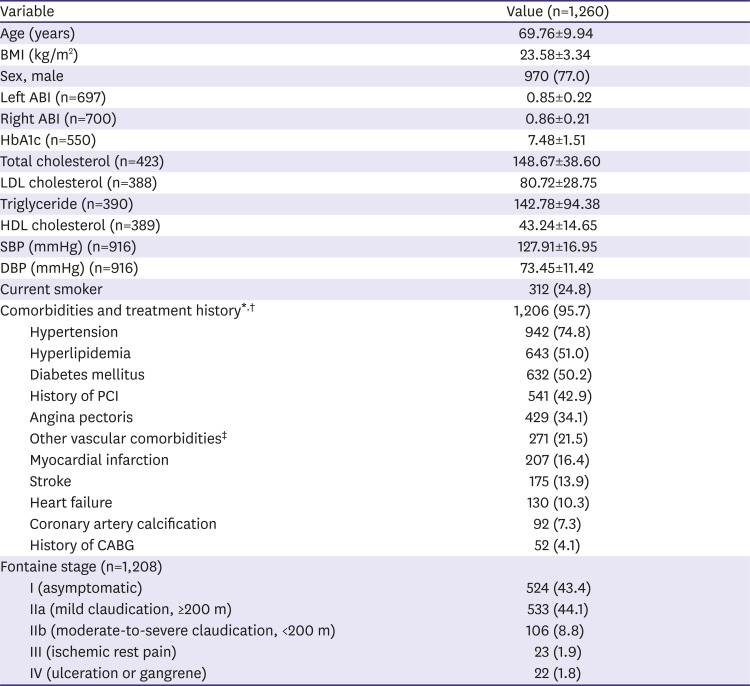
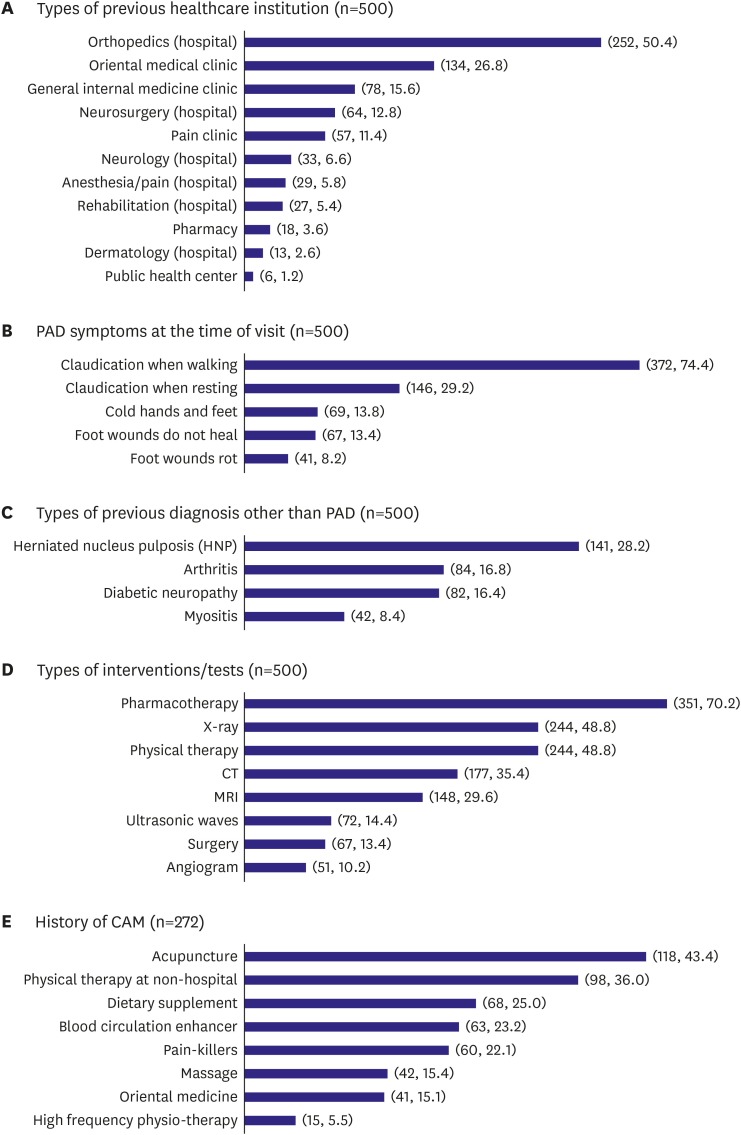
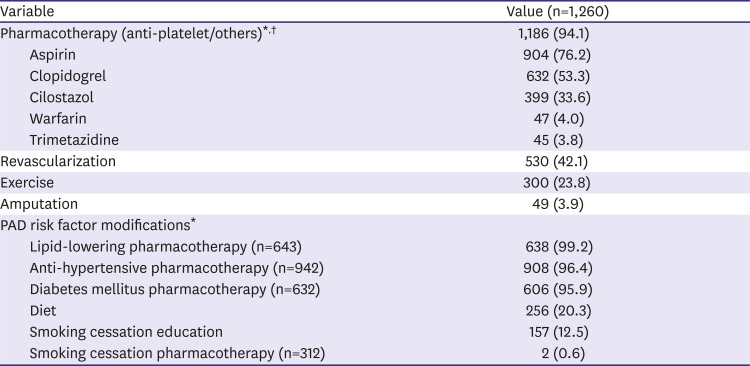
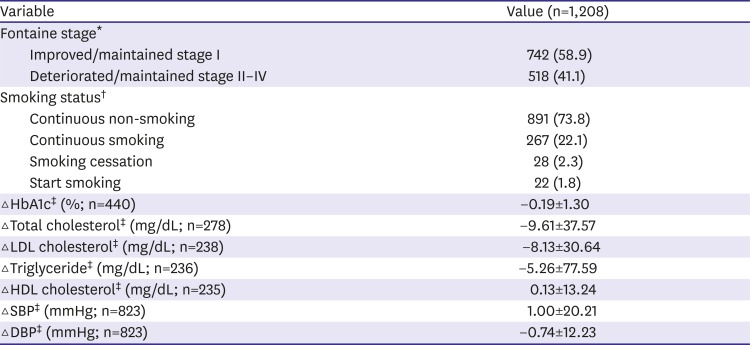
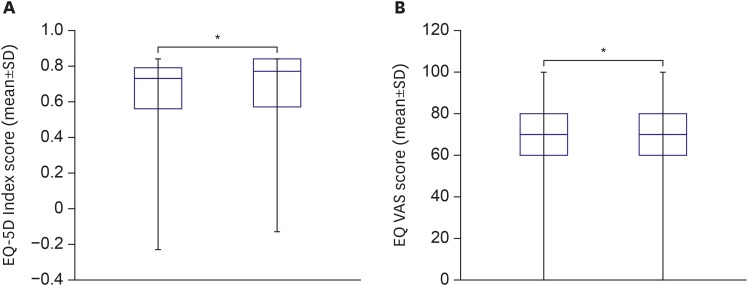
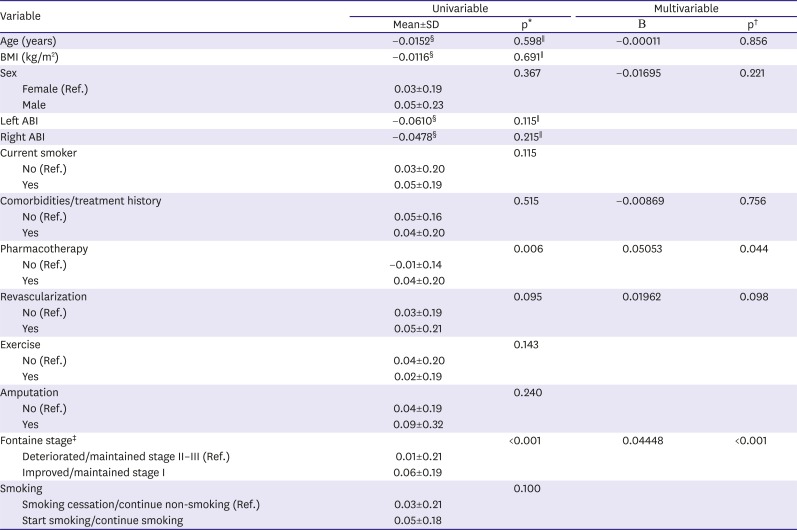




 PDF
PDF ePub
ePub Citation
Citation Print
Print




 XML Download
XML Download